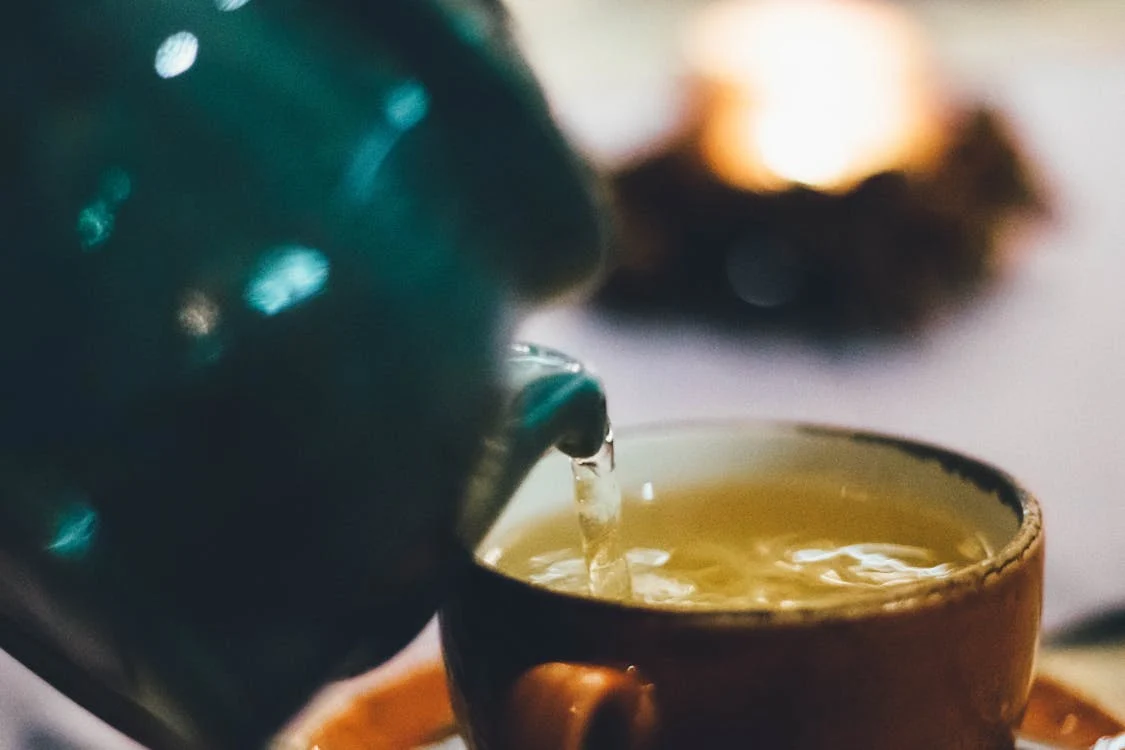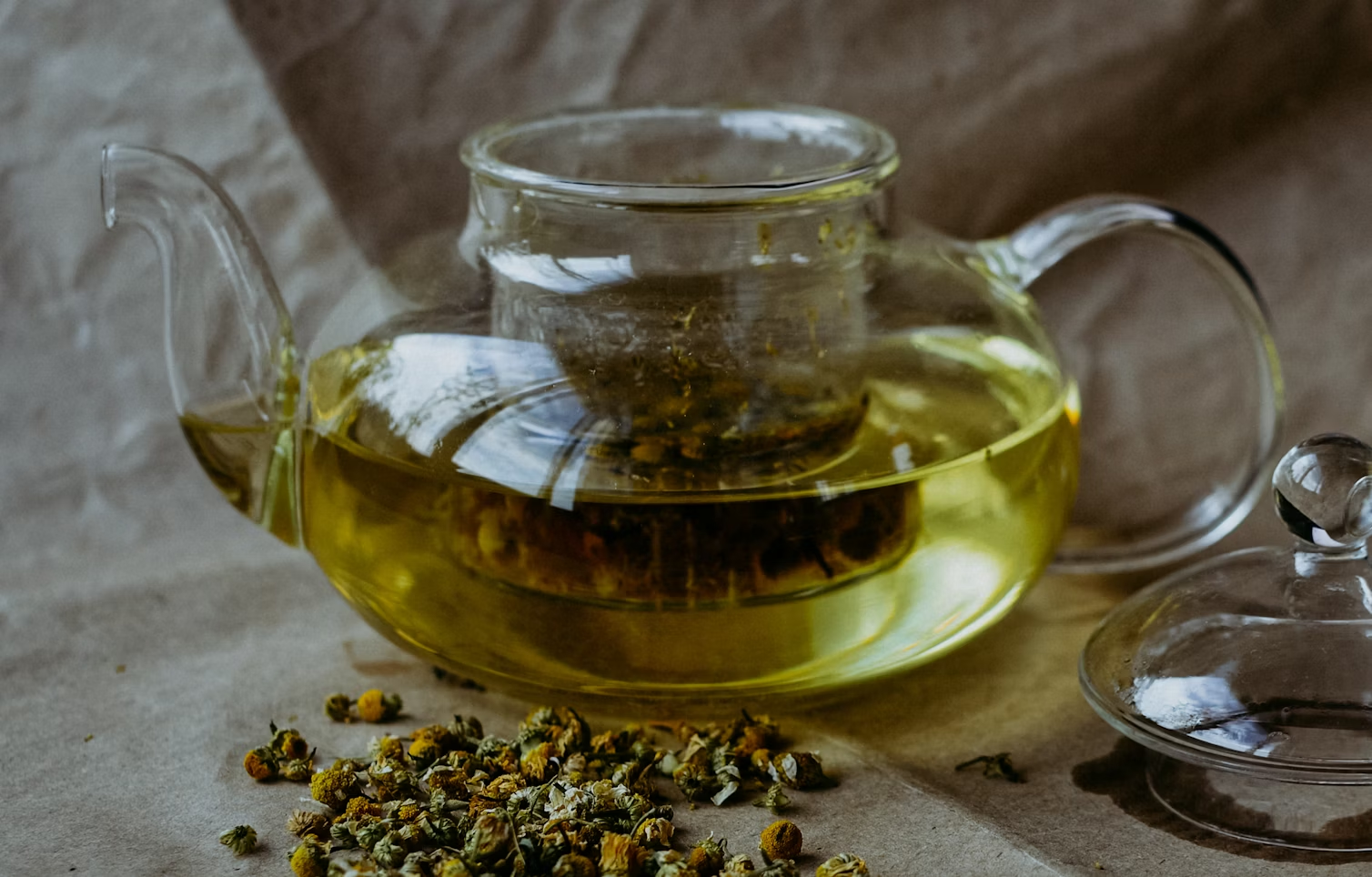
There are countless varieties of tea, but two have sparked quite a bit of debate: matcha and green tea. While both come from the same plant, the Camellia sinensis, they differ in many ways.
From their cultivation to their preparation and health benefits, understanding the differences can help you choose the best option for you. So, what sets these two teas apart, and how can you find the right one for you? Let's find out!
What is Matcha Tea?
Matcha is a form of green tea but with a twist. Unlike regular green tea, where the tea leaves are steeped in hot water and discarded, matcha involves consuming the whole leaf. The leaves are stone-ground into a fine powder, resulting in a vibrant green color. This bright green powder is whisked into hot water using a matcha bowl, creating a frothy, richly flavored tea.
Matcha is distinct because of its unique cultivation and preparation methods. Grown in the shade for the last few weeks before harvest, matcha leaves retain a higher chlorophyll concentration, giving them their signature color and a boost in nutrients. This shading process also increases the levels of l-theanine, an amino acid that promotes relaxation and offers a smooth energy boost without the jitters.

What is Green Tea?
Green tea is another well-known tea variety made from the Camellia sinensis plant. Unlike matcha, green tea involves steeping the leaves in hot water. After steeping, the tea leaves or tea bags are removed, leaving a refreshing and sometimes grassy-flavored beverage. Green tea leaves are often pan-fired, steamed, or sun-dried, which influences the final flavor.
Green tea has a lighter taste and can vary from earthy to slightly astringent, depending on the type and how it's brewed. This classic tea can be found in various forms, including loose leaf tea and tea bags. Though the flavor may be milder than matcha, green tea still offers a range of health benefits, making it a staple in many tea collections.
Difference Between Green Tea and Matcha Green Tea
Matcha and green tea are worlds apart in terms of cultivation, processing, and preparation. Here’s a closer look at what makes each tea unique.
Cultivation From the Tea Plant: Matcha vs Green Tea
The cultivation process is the first difference between these two teas. While both come from the tea plant Camellia sinensis, matcha undergoes a shading process. During the last few weeks before harvest, tea plants used for matcha are covered by shade. This shading helps increase the chlorophyll and amino acid content in the leaves, giving matcha its vibrant green color and more complex flavor profile.
Green tea is typically grown in direct sunlight. This method results in green tea leaves with a lighter green hue and a different chemical composition. Since green tea does not undergo the shading process, it has a lower concentration of certain nutrients, like l-theanine and caffeine, naturally present in the tea leaves.
Processing Matcha vs Green Tea Leaves
Processing methods also differ significantly. Matcha leaves are harvested by hand, and only the finest leaves are selected. After harvest, the leaves are quickly steamed to prevent oxidation, preserving their bright color. The leaves are then deveined, de-stemmed, and stone-ground into a fine powder. This meticulous process ensures that matcha retains its antioxidant properties and distinct characteristics.
Green tea leaves undergo a different process. They're often machine-harvested and then either pan-fired, steamed, or sun-dried. The oxidation process is halted to preserve the green tea taste. Unlike matcha, these leaves are not pulverized into a powder but are rolled and dried, so it’s often available as loose leaf green tea or in tea bags.
Preparation of Matcha vs Green Tea
Matcha is prepared using a matcha bowl and a bamboo whisk. Preparation involves whisking the matcha powder in hot water until it becomes frothy. This method ensures that you consume the entire tea leaf, maximizing the intake of nutrients. Matcha lattes are also popular, blending the powdered green tea with milk for a creamy, slightly sweet drink.
Green tea preparation is more straightforward. Loose leaf tea or tea bags are steeped in hot water for a few minutes, depending on the desired strength. Steeping time and water temperature can affect the flavor, with longer steeping resulting in a more robust, sometimes bitter taste. After steeping, the tea leaves are removed, leaving behind the infused liquid.
Matcha vs Green Tea Flavor Profiles and Uses
Flavor is another area where these two teas differ. Matcha has a bold, earthy flavor, grassy undertones, and a slight sweetness. Its rich taste makes it popular not just as a tea but also as an ingredient in culinary creations like green tea ice cream and baked goods.
Green tea has a lighter, more refreshing taste. Depending on the variety and brewing method, its flavor can range from mild and slightly sweet to grassy and astringent. Green tea is often enjoyed as a simple, soothing drink but can also be used in cooking, though its flavor is more subtle than matcha.
Nutrition Benefits: Matcha vs Green Tea
Both matcha and green tea are rich in nutrients. However, Matcha has a more concentrated source of these health benefits. Since matcha uses the entire tea leaf in powdered form, it contains higher levels of antioxidants, including epigallocatechin gallate (EGCG), which is known for its anti-inflammatory and metabolism-boosting properties. Matcha can have up to 137 times more EGCG than standard green tea.
Green tea also contains antioxidants but in smaller amounts since steeping extracts only some of the beneficial compounds. While green tea still supports heart health and reduces the risk of chronic conditions, matcha delivers a more potent dose.
Both are rich in the amino acid l-theanine, known for its calming effects. L-theanine works with caffeine to provide a balanced energy boost without the jitters. While matcha has more of this amino acid, green tea offers a more moderate effect due to the smaller amounts.
In terms of caffeine, matcha has a higher content, around 280 milligrams per cup, but it's balanced by l-theanine for sustained energy. Green tea has 15 to 48 milligrams of caffeine, making it a gentler option for those sensitive to caffeine.
Both teas contain vitamins, minerals, and chlorophyll, but matcha's nutrients are more concentrated since you consume the whole leaf. While matcha may provide a more potent punch of health benefits, green tea remains an excellent daily choice for those who prefer a lighter flavor and lower caffeine content.
Price
When it comes to price, matcha tends to be more expensive than green tea. The shading process, hand-harvesting, and stone grinding involved in producing high-quality matcha add to the cost. Ceremonial grade matcha, known for its bright green color and smooth flavor, is especially pricey.
Green tea, particularly in loose leaf or tea bag form, is generally more affordable. The less labor-intensive cultivation and preparation methods make it a cost-effective option for daily tea consumption. However, premium teas, such as high-quality loose leaf green tea blends, can also be on the pricier side.

Tea Time at Its Best!
Choosing between matcha and green tea depends on what you're looking for in a tea experience. If you prefer a stronger, more concentrated tea with a vibrant green color and rich flavor, matcha might be your go-to. On the other hand, if you enjoy a lighter, more refreshing tea with a subtle grassy flavor, green tea could be the perfect fit.
Whether you want to drink matcha for its energy boost or enjoy a classic cup of green tea, you can find both at Nelson's Tea. We also have a wide range of tea samples and accessories. From loose leaf tea to matcha powder, you can find the perfect brew for your taste buds. Dive into the world of tea today and discover what suits you best!
These statements have not been evaluated by the Food and Drug Administration. This product is not intended to diagnose, treat, cure, or prevent any disease.

